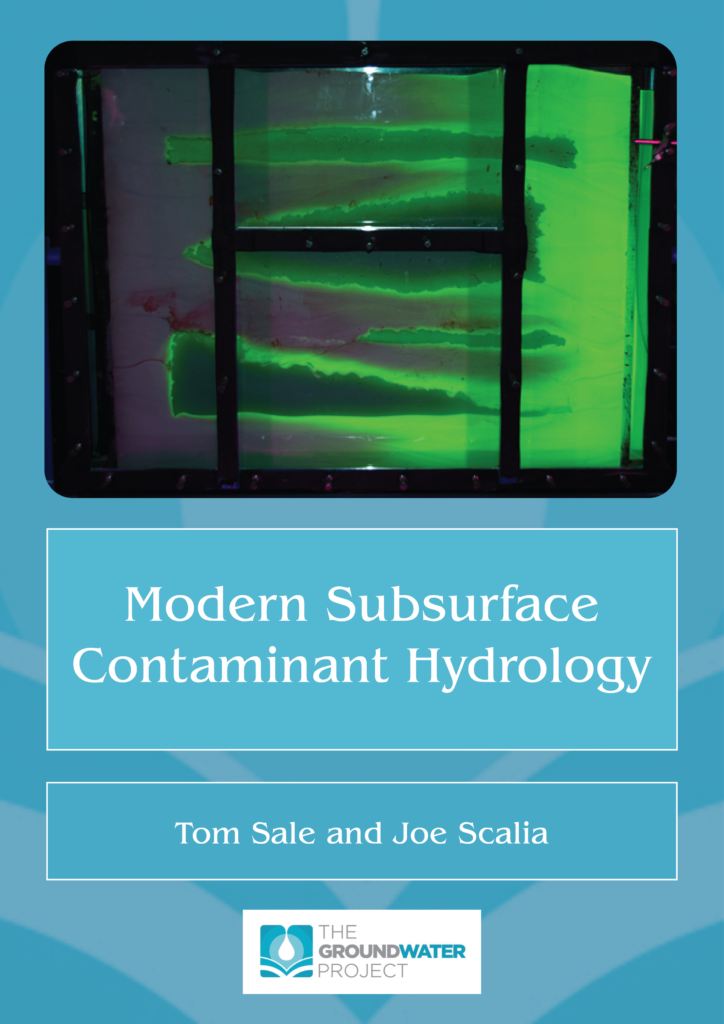1 OVERTURE
2 FOUNDATIONS
2.1 Subsurface Settings
2.1.1 Domain of Interest
2.1.2 14 Compartment Model
2.1.3 Pore Scale Subsurface Characteristics
2.1.4 Macro Scale Subsurface Characteristics
2.1.5 Geologic Type Settings
2.2 Hydrologic Cycle
2.3 Common Contaminants of Concern
2.3.1 Organic Compounds
2.3.2 Inorganic Compounds
2.4 Releases
2.4.1 Point and Nonpoint Sources
2.4.2 Nonaqueous Phase Liquids (NAPLs)
2.4.3 Aqueous Phase Liquids
2.4.4 Leachate from Solid Wastes
2.5 Partitioning Between Phases
2.6 Transport
2.6.1 Advection
2.6.2 Diffusion
2.7 Reactions
2.8 Conceptual Models
2.9 Mathematics – The Language of Quantitative Conversations
2.9.1 Transport Variables as Vocabulary
2.9.2 Derivatives
2.9.3 Integrals
2.9.4 Types of Physical Properties
2.9.5 Mass Balances and Governing Equations
2.9.6 Solutions
2.10 A Demonstrative Thought Experiment
2.11 Exercises Related to Section 2
3 TRANSPORT
3.1 Advection
3.1.1 Groundwater
3.1.2 Visualizations of Advective Transport
3.1.3 Advective Transport about Wells with Steady Pumping Rates
3.1.4 Capture Zones Around a Pumping Well
3.1.5 Exercises Related to Section 3.1
3.2 Multiple Immiscible Fluids
3.2.1 Hydrostatic Pore Scale Fluid Distributions
3.2.2 Capillary Pressure Curves
3.2.3 Steady State Flow of Immiscible Fluids
3.2.4 Exercises Related to Section 3.2
3.3 Diffusion
3.3.1 Mechanics of Diffusion
3.3.2 Storage and Release of Contaminants in a Low-k Zone
3.3.3 Diffusion Examples
3.3.4 Exercises Related to Section 3.3
4 REACTIONS
4.1 Observations from Field Sites
4.1.1 Conceptual Model A, Pulse Source—No Reactions
4.1.2 Conceptual Model B, Constant Source—No Reactions
4.1.3 Conceptual Model C, Constant Source—Transformation Reactions in Plumes
4.2 Chemistry Principles
4.2.1 Bonding Overview
4.2.2 Ionic Bonding
4.2.3 Covalent Bonding
4.2.4 Polarity and Polar versus Nonpolar Bonding
4.2.5 Thermodynamics
4.3 Site Attributes Governing Reactions
4.3.1 Conditions Imposed by Depositional Settings
4.3.2 Microbial Ecology
4.4 Partitioning Between Phases
4.4.1 Equilibrium Conditions
4.4.2 Nonequilibrium
4.5 Sorption
4.5.1 Linear Sorption
4.5.2 Nonlinear Sorption
4.6 Transformation Reactions
4.6.1 Zero Order
4.6.2 First Order
4.6.3 Pseudo First Order
4.6.4 Second Order
4.7 Exercises Related to Section 4
5 CONTAMINANT TRANSPORT MODELING
5.1 Why We Model
5.1.1 Academic Research
5.1.2 Modeling to Develop Quantitative CSMs (Conceptual Site Models)
5.1.3 Modeling to Standardize Approaches to Decision Making
5.1.4 Modeling to Forecast Future Conditions
5.2 The Art of Using Models
5.3 Governing Equations
5.3.1 Groundwater Flow for Fully Saturated Media Under Confined Conditions
5.3.2 Advective-Reactive Solute Transport
5.3.3 Advective-Diffusive-Reactive Solute Transport
5.3.4 Scaling REV-Based Governing Equations up to Field-Scale Problems
5.4 Modeling Methods
5.4.1 Empirical Methods
5.4.2 Analytical Methods
5.4.3 Numerical Methods
5.5 Solute Transport Using Heterogeneous Advective Diffusive Reactive Models
5.5.1 Models Developed at the University of Waterloo and the University of Guelph
5.5.2 The Two-Layer Scenario and the Dandy-Sale Model
5.5.3 Semi-Analytical/Numerical Methods for Modeling Matrix Diffusion
5.6 Key Takeaways from Modeling Systems of Transmissive and Low-k Zones
5.7 Exercises Related to Section 5
6 FINALE
7 EXERCISES
8 REFERENCES
9 BOXES
Box 1 Acronyms
Box 2 Derivation of an Analytical Solution for Waterflood DNAPL Recovery
Box 3 Derivation of a Solution for 1D Diffusion into a Low-k Zone
Box 4 Pe–Ph Stability Fields
Box 5 Equilibrium Partitioning Between Phases
Box 6 Sorption Study Examples
10 EXERCISE SOLUTIONS
11 NOTATIONS
12 ABOUT THE AUTHORS

